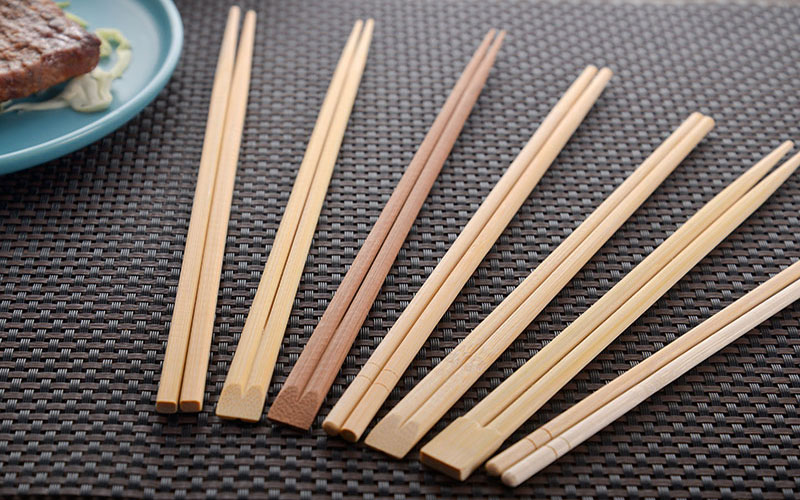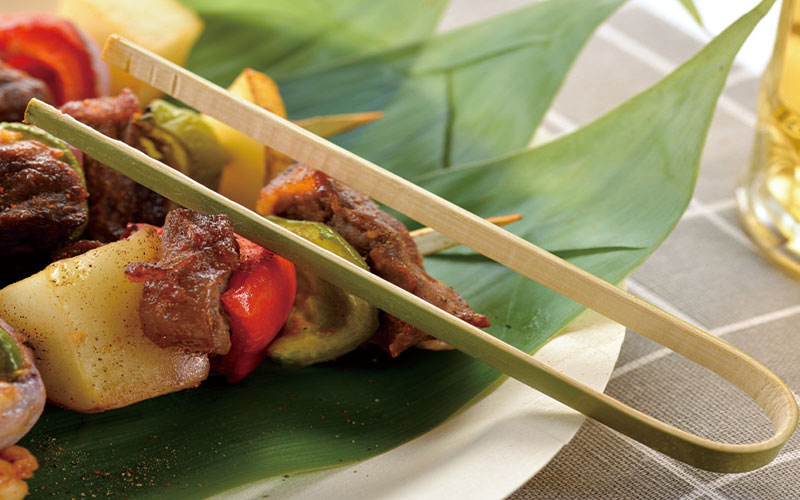Chopsticks are ubiquitous in Asia. They are essential for one’s daily life in the region, or the “chopsticks cultural sphere” that encompasses China, the Korean Peninsula, Japanese archipelago, and parts of Mongolia and mainland Southeast Asia. This is not only the impression most visitors to the region would have but many chopsticks users today in Asia also tend to think that chopsticks are more primary than other eating utensils. Previously, some Japanese food scholars have posited that chopsticks are an “exclusive” tool for the Japanese—when eating their daily meals, Japanese usually don’t use other utensils.

Contrary to this belief, which I also shared before beginning my research for my latest book, Chopsticks: A Cultural and Culinary History, chopsticks were not always the primary eating tools for the people in East and Southeast Asia. Proven by both archaeological and textual evidence, the spoon was actually the earliest and most important eating implement for the people in ancient times. There were plenty of reasons for the spoon’s primacy, but the most important one was that from antiquity to about the tenth century, millet was the dominant grain cereal in North China, Korea and parts of Japan. Millet was, and is, best cooked into porridge or gruel, for its grain size is smaller than rice. If millet were to be prepared like rice–brought to boil by applying high heat to the right amount of water, and then simmered over low heat until soft and fluffy—the millet grains on the bottom of the pot would burn while those in the middle would remain undercooked. As millet porridge was most common, the spoon became the most convenient tool because it helped one to eat the food elegantly. Because grain food was, and is today, the most important part in a meal, the tool that transports it best also gains its primacy.
Then what about chopsticks? As in the case of boiled millet porridge, boiling was the basic cooking method in Asia, and elsewhere. In ancient times, one boiled not only grain food but also non-grain food; of the latter, according to the Classic of Rites, a text from Han China (206 BCE – 220 CE) or earlier, stew (geng in Chinese) was most common—“geng (stew) and fan (grain) were eaten by all, from the princes down to the common people, irrespective of status.” The same text also enjoins that when one eats the geng (stew), one should use chopsticks because they are more efficient in picking up the foodstuff (e.g. vegetables) from a stew or any soupy dish. (This incidentally is how Japanese miso soup is supposed to be eaten, though many outside Japan use a spoon today.) As grain food was more important than non-grain food in a meal, chopsticks thus were a supplementary implement. This role was clearly suggested by the form “zhu” 筯, or the Chinese word for chopsticks in early days.

But thanks to the growing appeal of wheat in 1st century China, especially to the wide adoption of millstone in milling wheat into wheat flour, chopsticks gained an inroad into undermining the spoon’s primacy. By the 10th century, wheat succeeded in dethroning millet as the most consumed grain among the northern Chinese, followed also by the Koreans. Wheat flour foods, such as noodles and dumplings, combined grain and non-grain foods in one form, and to eat noodles, chopsticks clearly were the better tool, for the spoon could not lift them. Chinese also customarily have used chopsticks to eat dumplings. From then onto this day, noodles and dumplings are arguably the most-liked wheat flour foods in the region. Their popularity has also turned chopsticks into the more widely used eating implement than the spoon. Not only do the East Asians use chopsticks to transport noodles, but one study suggests that medieval Turks also used chopsticks to eat “macaroni,” possibly due to Mongol influence. In modern days, the most well-known noodle dishes around the world perhaps are Japanese ramen and Vietnamese pho–both are best eaten with chopsticks.

The second “push” for the ascent of chopsticks in history was the increased consumption of rice throughout Asia, from Vietnam and South China to North China and then to Korea and Japan, from the 11th century onward. The introduction of early ripening rice from Vietnam was a factor. Since cooked rice, which is more consistent than millet, can be transported in clumps, one can now jettison the spoon. And, as non-grain foods—i.e. stew and others—have traditionally been conveyed by the use of chopsticks, so gradually, one need only a pair of chopsticks to handle the daily meal in the region, just as the Japanese scholars have observed. However, if chopsticks became an “exclusive” eating tool in Japan, then the same could be said in China and Vietnam. Korea is an exception because to this day, spoon and chopsticks are still used together as a set by Koreans to eat. However, in my research, I discovered that this Korean eating etiquette reflects a cultural decision more than a culinary need, since rice’s consistency also allows Koreans to carry it with chopsticks, and many Koreans do just that in informal settings like a family meal.
Besides milling wheat flour, millstone is also used by the Asians to grind rapeseeds and other vegetable seeds for cooking oil. Once cooking oil is readily available from the 3rd century, then a new cooking method was born, which was stir-frying. Over time, stir-frying, or sautéing, became a quintessential way of cooking Chinese food and continues to this day. In preparing stir-fried dishes, foodstuffs are precut to bite-size morsels for fast cooking. As such, chopsticks also become a convenient utensil to pick them once cooked, for they could allow their users to transport, more precisely than a spoon would, the desired amount of food to their mouth. In pre-modern times, this way of eating was also more hygienic because chopsticks’ small size minimized the chance of passing one’s germ to the food in communal eating.
In sum, though invented in antiquity about 7,000 years ago, chopsticks were not always as essential as one tends to think. A rich story indeed is behind the evolution of chopsticks to be the indispensable utensil for the people in the “chopsticks cultural sphere.” And the evolution reflected and registered the remarkable changes in culinary traditions and dietary practices. Moreover, the story is still unfolding today—the growing global appeal of sushi in particular, and the ubiquity of Chinese restaurants and takeout around the world, have all left indelible marks on the use, appeal and appearance of chopsticks.


